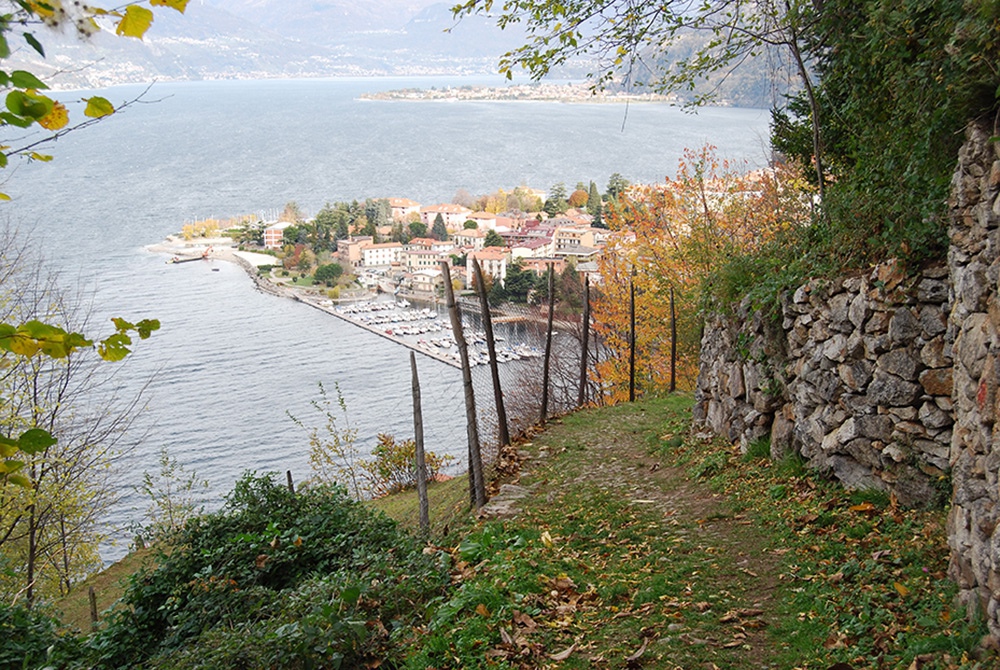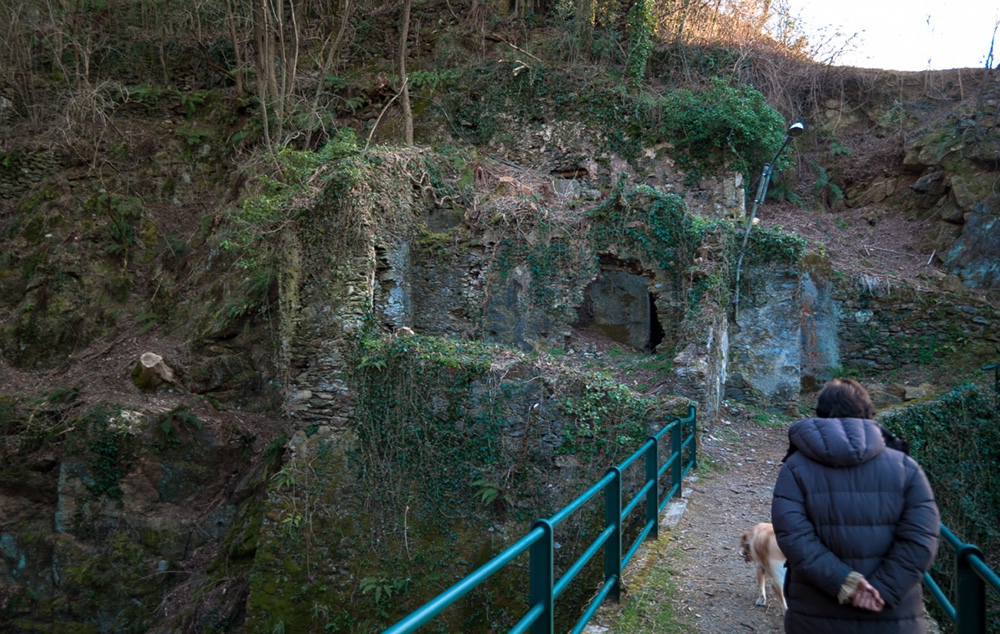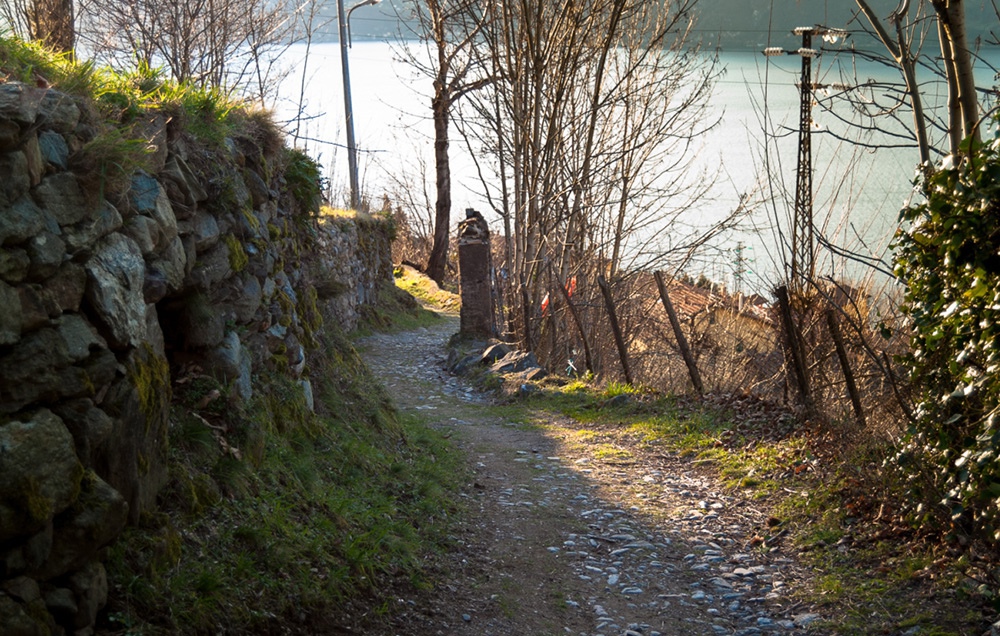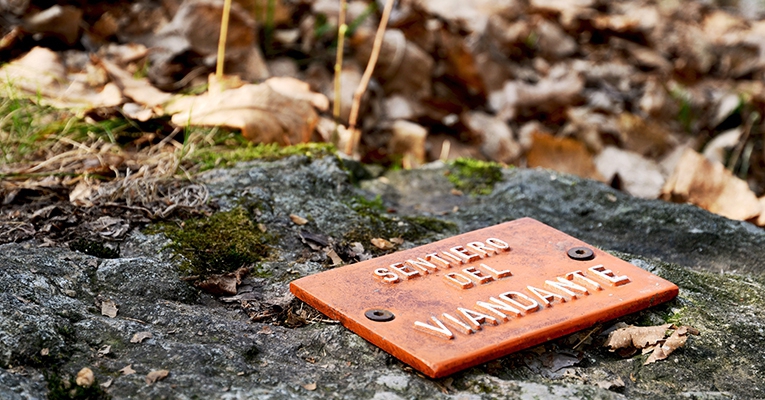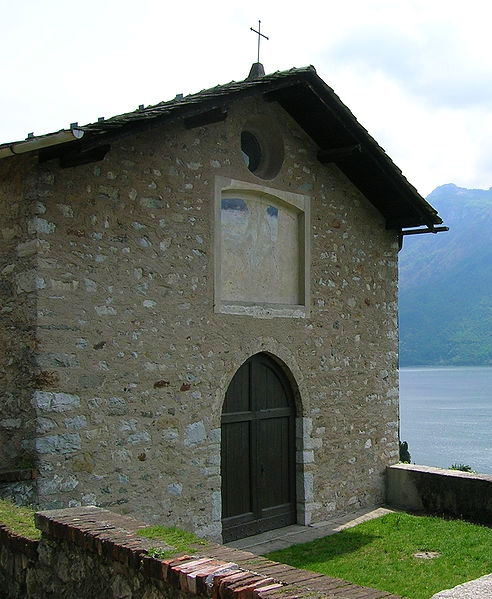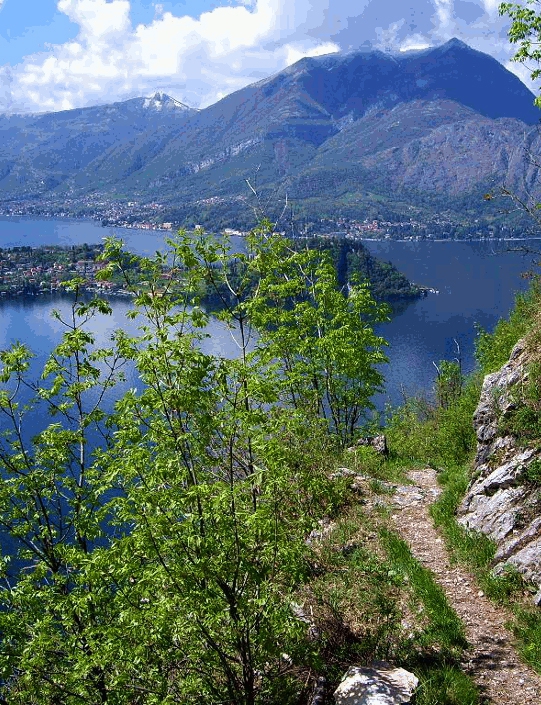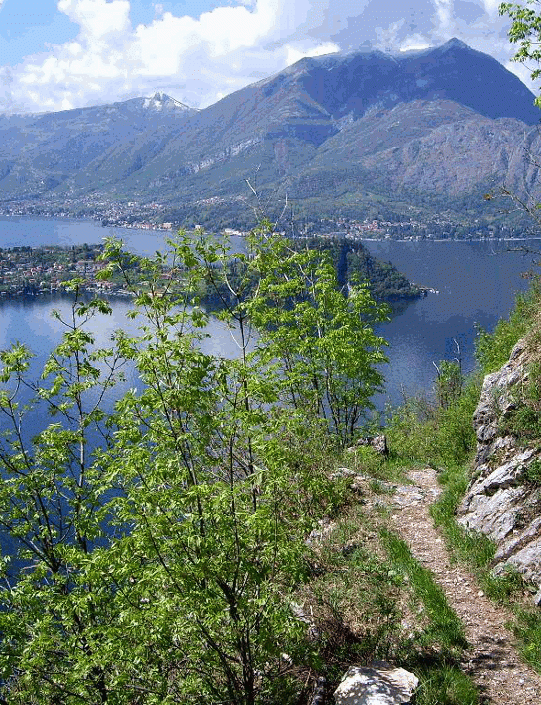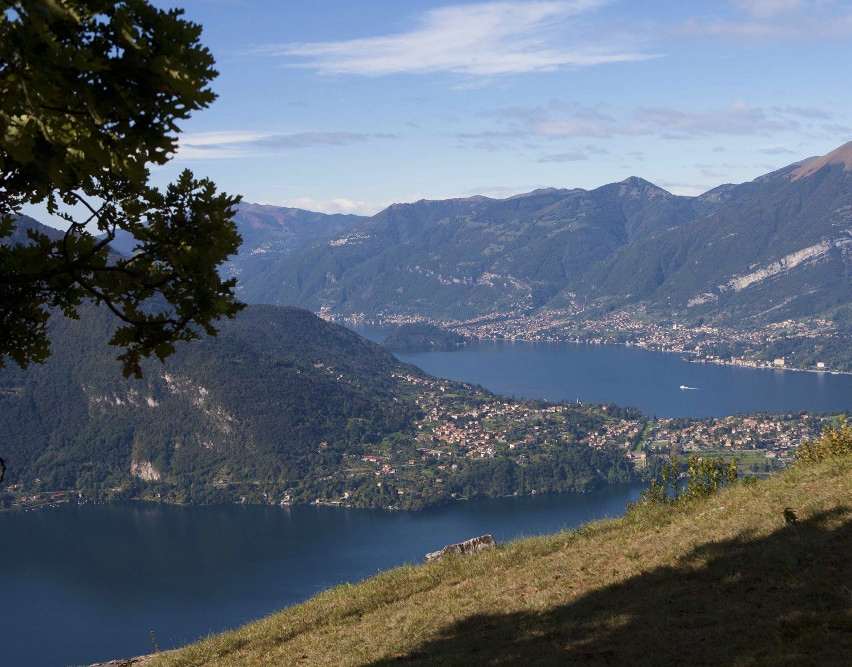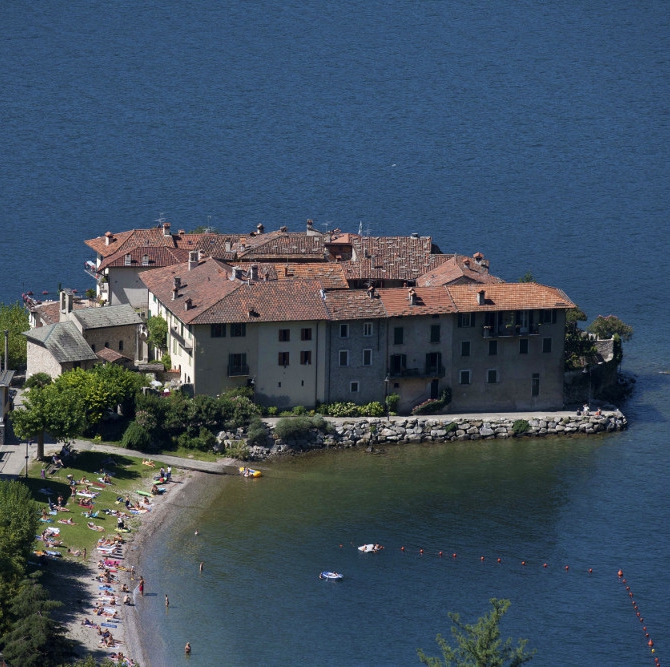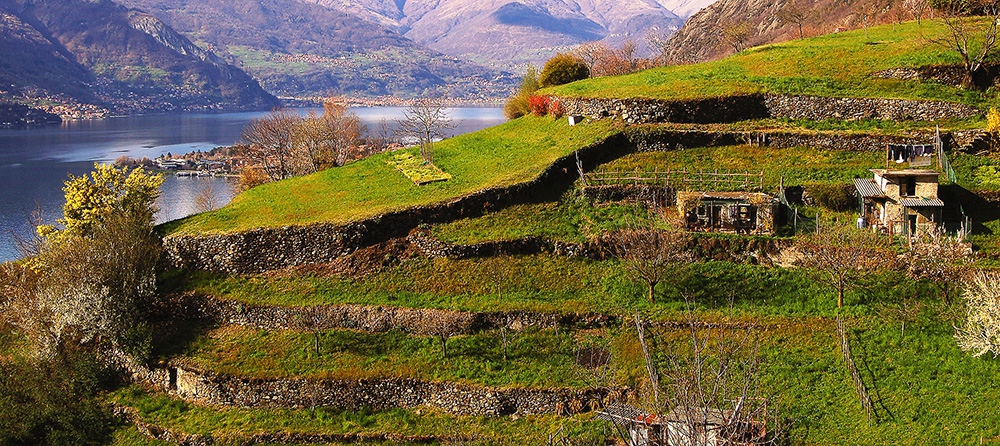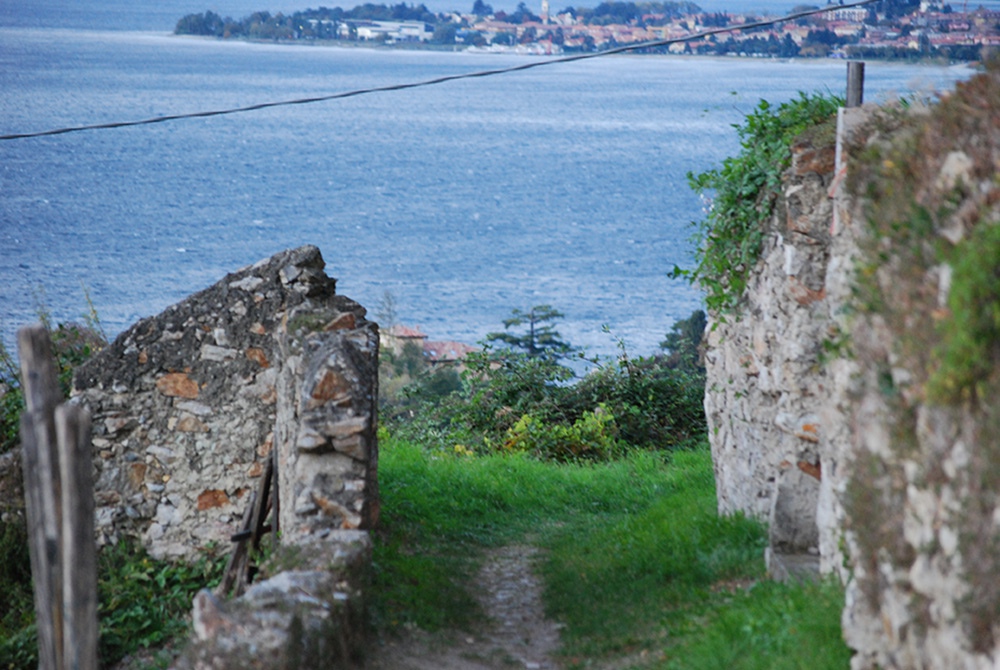Sentiero del Viandante Varenna Like
Sentiero del Viandante: Description
A short but attractive path which runs from Varenna to Bellano along a thin mule track that winds along the side of the mountain among chestnut woods and mild cultivated slopes. In a few hours time it collects the best of the landscape characters in this part of Lombardy: majestic landscapes, botanical and geological peculiarities, tokens of faith, places of the popular imagination, scraps of fields, rustic houses, vineyards and olive groves which create a frame that has been sung by poets and writers at length and for a long time.
Interesting spots on the path:
The Castle of Vezio
The black marble querries of Varenna The abbot Amoretti, in 1824, stated to be “that hard and pretty marble that we call occhiadino, because it by many eyes seems formed and it composed of blackish marble and white spar, that now and then fills the openings left by the sea bodies intermingled". Davide Bertolotti, in 1821, noted down in his Journey on Lake Como: “Then we walked by the querries of marble which layers, overwhelming the lake in a nearly perpendicular line, make the work of extraction hard and risky; so that you often see workers, tied in the air with ropes, hitting with the tools on the hard stone, hanging on the precipice".
The dry stone walls
Walking along the path, you will certainly have the chance to notice the beauty of the walls that delimit it. They are mighty manufactured works that sometimes are nearly two metres hight. The stones keep and balance themselves simply by compression without the need of mortar or of other binder. Where they do not fit exactly thinner stones are inserted so to make the wall solid and compact. In fact it is exposed to very strong pressures and you can verify this where, by fault or by neglet, the walls are belly-flopped, that is where the soil succeeds in expanding them until they “explode". In the craks small plants grow; they are varied and among them the tancy (Tanacetum parthenium), the stonecrop (Sedum acre), the red valerian (Centranthus ruber) and the crane’s bill (Geranium robertianum).
The funicular of Regoledo
A deep and large man-made wall: ths is what remains of the funicular which, at the beginning of the century, linked up the railway station to the imposing hydrotherapic place, founded at Regoledo, as was called in those times, had renowned guests among which Arturo Toscanini, Ippolito Nievo, Amilcare Ponchielli, padre Agostino Stoppani, Cesare Cantù. The strange building, very long and narrow, is now a branch of the Istituto Sacra Famiglia of Cesano Boscone and can be seen high up, dominating a wide green clearing.
The boundary stones
They are on the edge of the mule track. They are three and are engraved with the date 1732 and the initials of the municipalities of Perledo and Bellano that border here. Further on you will find again other stones because the administrative limit ran along the path. Near the stones there is a modest chapel that has a precious Crucifixion of the XV century.
A lithological boundary
Looking closely at the walls along the track, you will notice that at a certain point the stones become different from thise seen before. At first they are greyish calcareous stones (gneiss and schist). The fact is that you have got past the partition line between the sedimentary cover, typical of the foothills of the Alps and which was formed in the Triassic perios (250-210 millions of year ago), and that of the crystalline base that here emrges.
In Bellano the hiking ends right next to the Orrido, a gorge made by the Pioverna River… a really suggested visit.
SENTIERO DEL VIANDANTE FROM VARENNA TO LIERNA
Time needed: half a day. Maximum difference in heigh: 563 m. (from Varenna to Coria) Suggested seasons: winter, spring. This interesting hiking offers you three differents ways from which you can choose.
Interesting spots on the path:
The English peopole’s graveyard
Built in 1820, it was altered many times. It is also known as the “English peolple’s graveyard" for the many British received here in the years. The graveyard chapel, on the south side opposite the entrance, was built in 1931 on the design of the famous Milanese sculptor Giannio Castiglioni (1884-1971), author of many remarkable works, among which one of the doors of the Duomo di Milano. His son Achille has been the acknowledged father of the Italian design. In the peace of the Parco delle Rimembranze, we stop a moment to meditate, enjoying one of the best views on the whole central basin of the Lario. “The graveyards of the lake are often halfway up the hill, just outside the built-up area and every funeral service is a peaceful walk…If it has been windy, from the graveyard path, full of scented grasses, you can see yhe opposite shore got closer as a house wall." (Bruno Bianchi – 1979 – “Il Lago di Lecco" Fratelli Alinari Firenze). “Just like still today, in the villages of the Italian province, the graveyard is the fixed end of every evening wlak…" (Giorgio Bassani “Il Giardino dei Finzi – Contini" Mondadori, Milano – 1962).
The source of Fiumelatte
The Capuana
“Somewhat further Fiumelatte there is the famous Capuana, villa built by Ercole Sfondrati since 1600 and owned by Duca Serbelloni: near here there is the Uga beautiful spring of clear, fresh and sweet waters which quality does not alter neither for the effect of big rains nor for the rare dryness of the season. Its cave is beautiful to see, decked with laurels, from it the source gushes out and runs to give movement to some mills and then it disappears in the lake; this stream can be deviated and brought, at will, in the garden of Villa Capuana through a artificial grotto in tuff and then made it bounce from a flight of steps to create nice small waterfalls. Boldoni thought that the Villa of Plinius, called Commedia, was here in the place of the Capuana." (Pietro Turati, Antonio Gentile “Como e il suo lago" Tip.Giorgetti 1858 como). When the military road was built at the beginning of the 18th century, Villa Capuana got divided in two parts by the same road.
Valvacchera
“To work like donkeys, with the donkeys and to mix their sweat to one’s own sweat, to survive the cold of the mountains, the poor crop of the slopes with more wind than sun…From the slopes of the mountains they did not fall only stones, but faggots and trunks of beech, chestnut tree and maple were dragged: on the back, on mules, on donkeys, then on sledges that have polished the paving . When the slopes were arrenged in terraces to grow corn, rye, barley, buckwheat and then vine and corn the tracks all at big steps were made to link the mountain up to 1.200 m. with the lake and they are still in use. The faggots and the trunks, among shouts and curses…end at last on the shores, to form new stacks just by the track that from the mountain gets to the surface of the water. They will be loaded on boats by the same free-thinkers who have dragged them down there, or by others quite like them for the size of the hands, for the walking boots made with fabric and for the same degree of familiarity with God." (Bruno Bianchi – 1979 – “Il Lago di Lecco" Fratelli Alinari Firenze). And so also the Valvacchera was once used by the mountaineers of Esino to roll the logs of their woods downhill that, arrived at the lake, were loaded on merchant crafts, berthed at the small dock standing at the foot of the valley, towards the most different uses.
Lierna Castle
“…the old built-up area with small gardens and kitchen gardens toward the lake raised on a characteristic small peninsula, still has some traces of the ancient castle that in the Middle Ages, sheltered by tall walls, was the scene and the witness of bloody fights, wild attacks brought by the fleet of Como, of Milan, of the Torriani, of the Vsiconti and, in the XVI century, by the ships of Gian Giacomo de’ Medici, called “il Medeghino", lord of Musso and of the upper Lario. Facing the “Castello" and with the apse toward the lake the nice small church of San Maurizio that shows Romanesque characteristics in spite of the not always honest repairs undergone…" (Enzo Venini – “TUTTOVARENNA" Anno II n 4 August 1969). In 2005 a very careful and through restoration has brought the small church back to the ancient magnificence.
THE PATH FROM VARENNA TO ALBIGA IN PERLEDO
Time needed: one day, considering the different stops Suggested season: autumn, spring The path, following a short part of the ancient Sentiero del Viandante – from Varenna to Bellano – as far as Cappella Maglia, reaches the green esplanade of Monte Albiga, 864 m.
Interesting spots on the path:
The Castle of Vezio
The black marble querries of Varenna
The abbot Amoretti, in 1824, stated to be “that hard and pretty marble that we call occhiadino, because it by many eyes seems formed and it composed of blackish marble and white spar, that now and then fills the openings left by the sea bodies intermingled". Davide Bertolotti, in 1821, noted down in his Journey on Lake Como: “Then we walked by the querries of marble which layers, overwhelming the lake in a nearly perpendicular line, make the work of extraction hard and risky; so that you often see workers, tied in the air with ropes, hitting with the tools on the hard stone, hanging on the precipice".
The Cadriano cross
Cestaglia is dominated by the “Sasso di Cadriano" (458 m.) with its cross. They say that at the end of the XIX century, when Regoledo was more than a small settlement, the village butcher killed a fellow villager in a furious row. Even if it was in self defence, the man, with the conscience weighed by such a sin, erected this cross as expiation sign before running away. Thrown down by lightenings, later it was erected again in the first years of the 1920s by a group of young local emigrants before leaving for the “Americhe".
Monte Albiga
It is the top of the North West spur of Monte S. Defendente and it is essentially a peak of rocks covered with a luxuriant vegetation, at the edge of two wide grassy hollows. One can reach the top (915 m.) – covered with an exuberant laburnum wood – following the trace of a path.
More to Explore.
Explore 42 other Hikes and Walks
Stroll through a manicured garden or hike atop a snow covered mountain.
